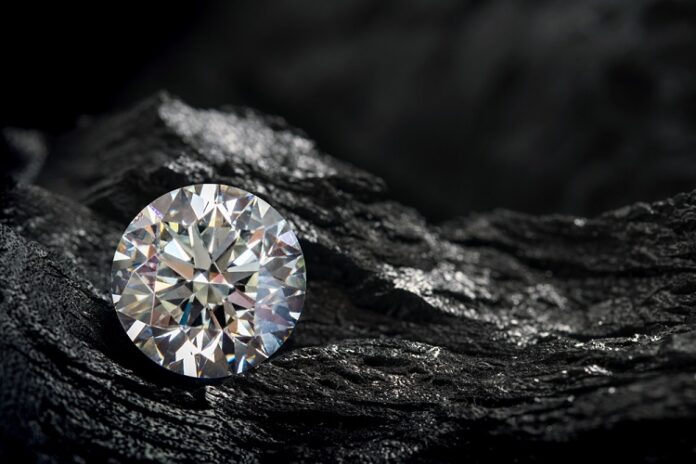Buying diamonds tends to be a hectic experience when the right knowledge is not possessed. What many would have thought to be a fun and easygoing experience could become a nightmare. Worst case scenario, one might be cheated or scammed when it comes to diamonds. It becomes very essential to possess knowledge of diamonds. Being in the online diamond industry for over 5 years, Rare Carat possesses amazing diamonds that come in different shapes, designs and sizes. They offer VVS and VS1 diamonds and guidelines for choosing them. This article seeks to decipher inclusions and give a detailed guide to VVS and VS diamonds. It is important to know that diamonds are grouped based on the 4Cs. The 4Cs are clarity, color, cut and carat weight.
Table of Contents
Detailed Guide To VVS Diamonds
VVS which is the abbreviation for “Very Very Slightly Included”. This is to say that a VVS diamond has very small inclusions which can hardly be seen under 10x magnification. VVS is used to define a diamond with regard to its internal and external features. The VVS diamonds are mostly referred to as flawless diamonds and come in two different types. VVS1 and VVS2.
VVS1 and VVS2 Differences
The inclusions in VVS1 diamonds are lesser and usually cost more as compared to VVS2. Both the VVS1 and VVS2 diamonds are mostly small. Normally, diamonds that are VS1 have flaws that are far-off. VVS2 turn to have more inclusions or flaws that are near the edges. When it is close to the edge the flaws will also be more and harm its sparkling. This is the reason VVS1 diamonds are more expensive than VVS2 diamonds. But with the naked eye, what distinguishes them cannot be seen. Even with magnification, an untrained person will find it hard to spot the inclusion in any of them. To purchase or learn more about VVS diamonds, click here.
Detailed Guide To VS Diamonds
Just as diamonds are graded based on clarity, the VS diamonds which means “very slightly included” according to GIA benchmark, contain two sub-categories namely VS1 and VS2. Most inclusions on VS diamonds are eye-clean, and the inclusion on them can only be seen through 10x magnification.
VS1 Diamond How To Choose One
When choosing a VS1 diamond there are two things to consider when it comes to its inclusions. These are:
1. Less Desired Inclusions
With VS1 diamonds, be careful not to choose one with opaque black crystals which is mostly called Piqué. They come in a round form and are visibly solid. It appears at the edge of the girdle in VS1 diamonds. Do well not to choose them.
2.Incusions That Can Affect Longevity
An issue is often encountered regarding the durability or longevity of stones, this is mostly caused by the presence of knots and cavities. Knots refer to exposed crystals on the surface, which, unfortunately, can sometimes come out. This results in both an unsightly hole and a reduction in the stone’s weight, causing considerable disappointment. A cavity on the other hand is what happens next after a knot comes out entirely. In more severe cases, the stone might even suffer chipping or breakage if subjected to a precise impact.
SI Diamonds
SI diamonds which stand for “Slightly Included” belong to a specific class of diamonds characterized by inclusions within their internal makeup. When observed without any magnification, these gemstones might fall under the category known as ‘eye-clean’ as per jewelers’ terminology. This means that any internal flaws are not seen by the bare eyes. Nonetheless, these inclusions do exist and can affect the diamond’s ability to reflect light perfectly. Therefore, it’s crucial to also take into account other grading factors, such as the cut and color of the diamond, which contribute to enhancing its sparkle. SI diamonds are grouped into two. SI1 and SI2.
Differences Between SI1 and SI2 Diamonds
What distinguishes the SI1 diamonds and SI2 diamonds is something small. Both categories feature inclusions, yet SI1 diamonds have imperfections that remain totally unnoticeable to the eyes. Conversely, when inspecting an SI2 diamond, there’s a higher probability of finding these inclusions without the help of magnification. When examined closely, the presence of inclusions becomes evident in both SI1 and SI2 diamonds. Learn more about SI diamonds by clicking here https://www.rarecarat.com/blog/diamond-ring-tips/what-is-an-si-diamond-rarecarat-com
Having the right knowledge about diamonds is very important in today’s world. Rare Carat offers total guidelines on vs1 diamond: how to choose one, VVS diamonds and SI diamonds.




